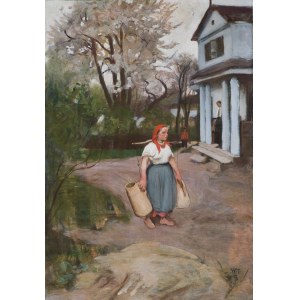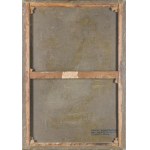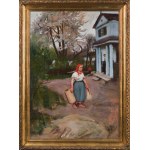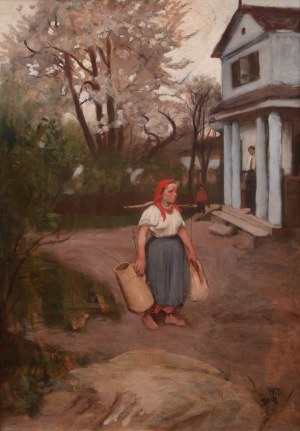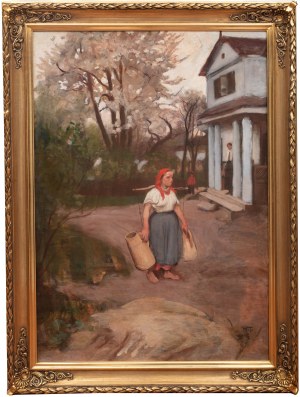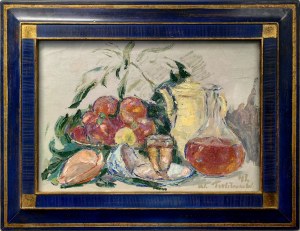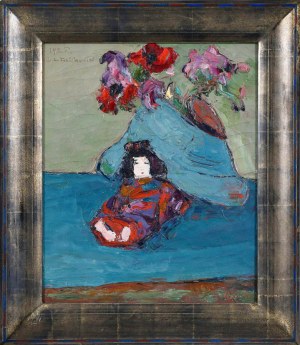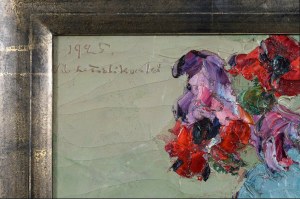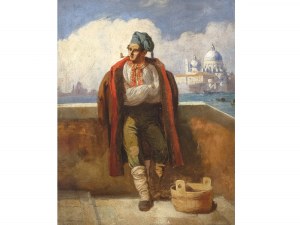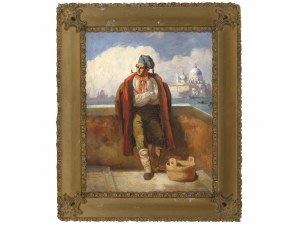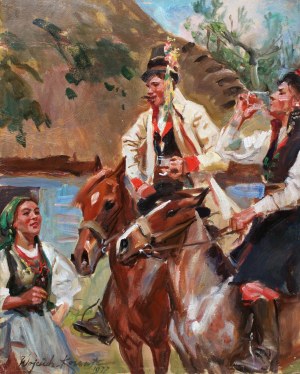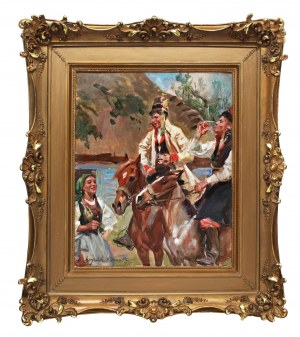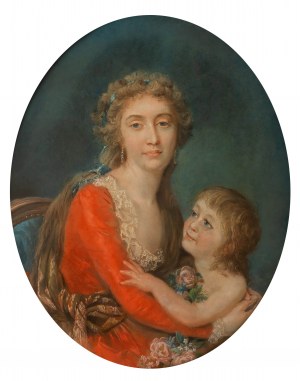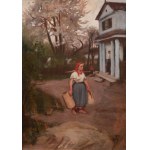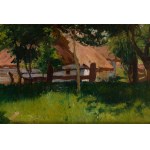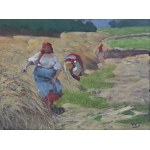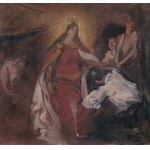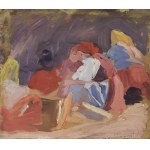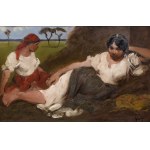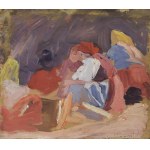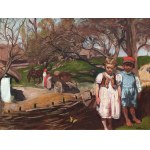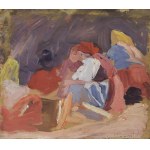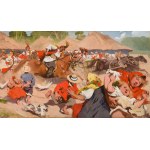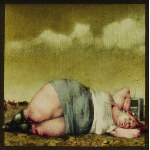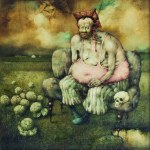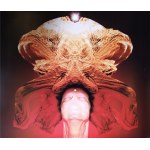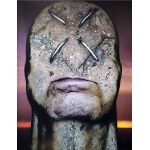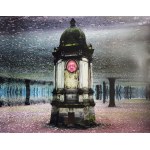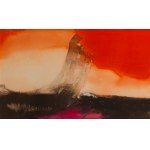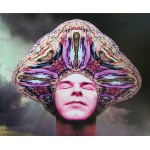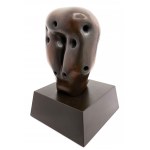115.5 x 81.0cm - oil, doubled canvas signed p.d.: W.T.
On the transverse strip of the painting loom a note (stamp, ink): Painting by Włodzimierz Tetmajer | sold on 19/10 1935 by | Michał Dylski | MICHAŁ DYLSKI | Zaprz. rzeczozn. Sądowy | Lwów, Wałowa 21 Tel. 30-54 | Dylski
On the reverse, p.d. in black oil: PAINTING CONSERVED | ART. CZAJKOWSKI | LEONARD PAINTER IN 1972.
Let my quiet, under the wooden porch, be sacred
My country manor white, in a grove of old trees! (...)
I built it for my children - in such I grew up myself,
In such we were lulled by the old fathers' song (...)
In this house we were taught unshakable faith,
That Poland will one day be rebuilt by the Polish People!
That for her it is necessary from life and property sacrifice,
That only with bloody work will we bring about a miracle! (...)
So I wish that the new house would teach my children
To love the dead Motherland and worship her as God!
And believe that a new star will dawn for us!
And through the village to an independent Poland the way!
W. Tetmajer, Na dom bronowski, quoted in Włodzimierz Tetmajer. The power of colors and temperament. Exhibition catalog, M. Marek, P. Hapanowicz, Museum of Krakow, Krakow 2023
I can vouch (...) that a peasant wedding, with all its local color, with its one and only fierceness, with all its immeasurable colorfulness, has always been for Tetmajer something like a Napoleonic epic is for me. I could not marry the daughter of any of the marshals or heroes of the first consul, because if she were alive, she would be seventy years old, but he could marry a girl coming out of the world of his ideals," wrote Wincenty Los, quoting Wojciech Kossak's words about Włodzimierz Tetmajer's marriage to Anna Mikołajczykówna, the daughter of a peasant from Bronowice (quoted in after J. A. Nowobilski, Włodzimierz Tetmajer, Czuwajmy Publishing House, Cracow 1998, pp. 23-24).
The wedding, which took place in 1890, caused a great scandal in Krakow. With time," wrote Tadeusz Boy-Żeleński, "the marriage became tame, and in turn a mania was created that was more unpleasant for Tetmajer: it was a favorite walk for Krakow residents, more or less acquainted, to visit him in Bronowice (quoted by J. A. Nowobilski, op. cit., p. 23). The place where Anna, famous for her cordiality and hospitality, received Krakow guests was Tetmajerówka. This was a post-Franciscan farmhouse purchased by the artist in 1902: a manor house with outbuildings, which Tetmajer renovated and also built a brick studio there. Tetmajer's house, which he painted more than once, had a special meaning for him. It was not only a family nest, where he lived with his wife and eight children, an open house, but also a motif that has a peculiar symbolism in his work. It is a place where the inhabitants of two worlds - the noble and the Polish countryside, who will regain their freedom together in the future - meet.
Włodzimierz Przerwa-Tetmajer (Harklowa near Ludźmierz in the Podhale region 1862 - Kraków 1923), the half-brother of the poet Kazimierz, began studying painting at an early age; as early as 1875 he attended classes at the School of Fine Arts in Kraków, where he continued (with breaks) to study until 1895 - initially with Franciszek Cynk, Leopold Loeffler and Władysław Łuszczkiewicz, and after 1889 with Jan Matejko. At the same time he studied classical philology at Jagiellonian University. In 1882 he still studied at the Vienna Academy, and in 1886-89 at the Munich Academy under Alexander Wagner. He supplemented his studies at the Académie Colarossi in Paris. An imperial scholarship enabled him to travel to Rome. Upon his return, he lived in Cracow. In 1890 he married Anna Mikołajczykówna, daughter of a farmer from the village of Bronowice near Krakow, where he himself often stayed, and in 1895 settled permanently. In 1901 he founded and then ran a painting school for women for several years. Since 1899 he was a member of the Society of Polish Artists "Art"; in 1901 he was one of the founders of the Society "Polish Applied Art"; in 1908 he co-founded the "Zero" group. He was a prominent representative of the "folklore" trend, a painter of customs, labor and landscapes of the sub-Krakow countryside. In his earlier period he created in the spirit of academic, Munich realism. Later he developed his own original style - the composition of his paintings was free, he painted with broad brushstrokes and used bright, vivid colors. In 1892-1894 he collaborated with Wojciech Kossak and Jan Styka on Panorama Raclawicka. He designed stained glass windows, did illustration and mural painting, including a polychrome of the Queen Sophia Chapel at Wawel Cathedral in 1902. The artist was the prototype for the character of the Host in S. Wyspiański's drama The Wedding.
Recently viewed
Please log in to see lots list
Favourites
Please log in to see lots list



